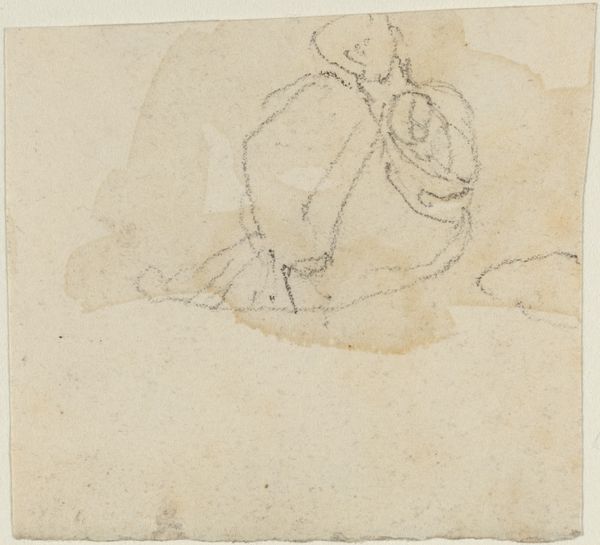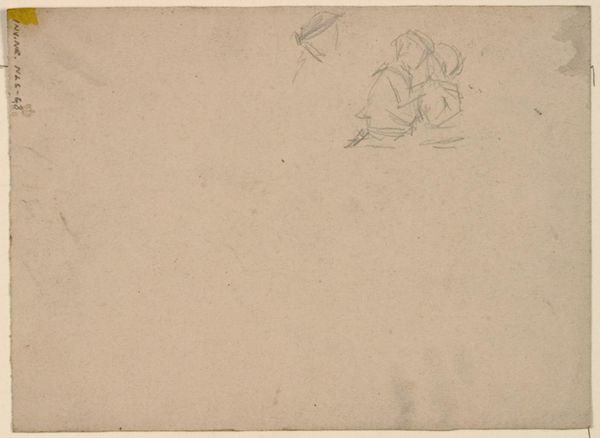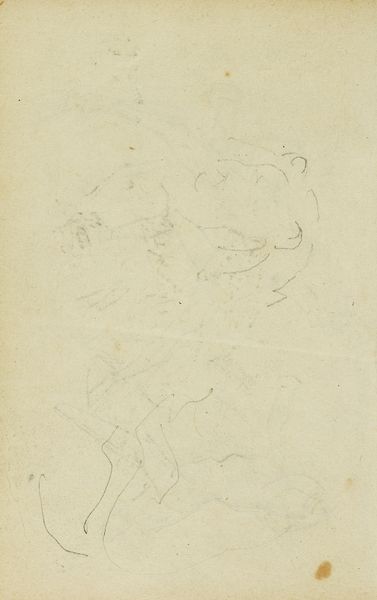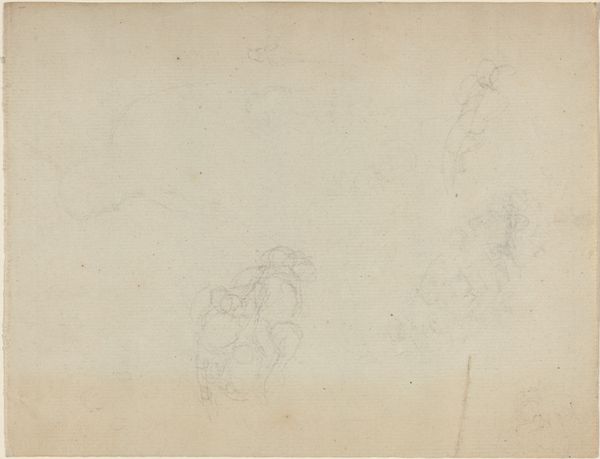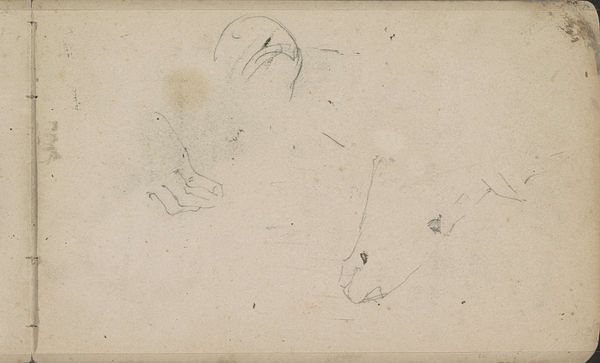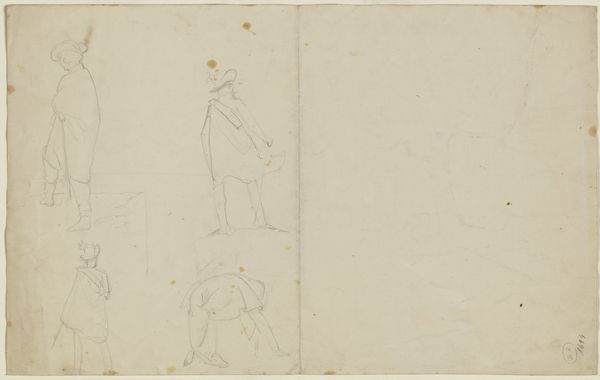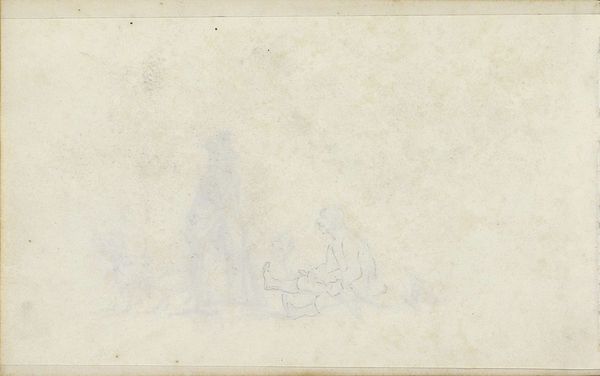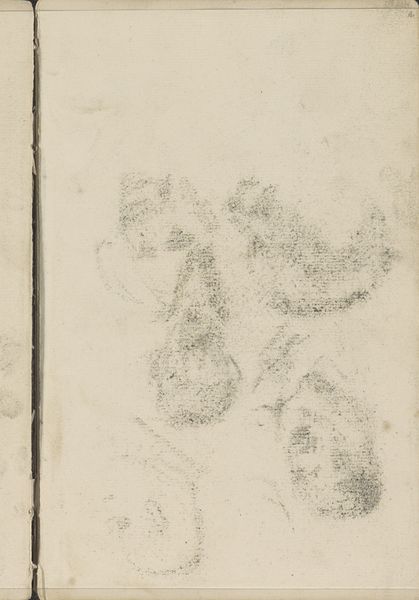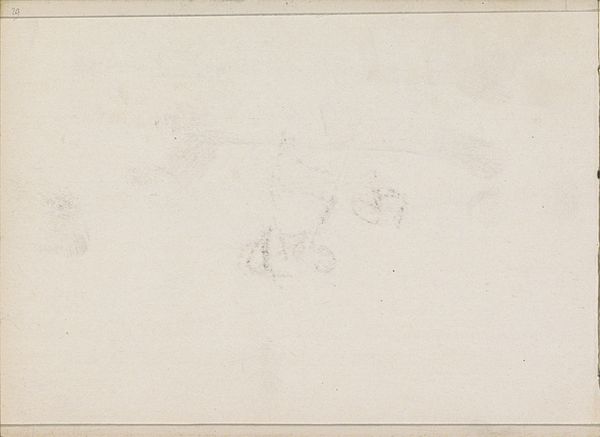
drawing, pencil
#
drawing
#
figuration
#
pencil
Dimensions: overall (approximate): 5.4 x 7.5 cm (2 1/8 x 2 15/16 in.)
Copyright: National Gallery of Art: CC0 1.0
Curator: Here we have John Flaxman's "Group of Figures", rendered in pencil. It’s a preliminary drawing on a heavily textured piece of paper. What's your initial response to it? Editor: It feels almost ghostly, insubstantial. Like figures fading into the page. The visible fibers of the paper contribute to this feeling of ephemerality. I imagine this piece could represent the fragility of human existence. Curator: That reading resonates given the era, really foregrounding this notion of sketching as a preparatory stage. Flaxman’s method involved numerous preliminary studies using relatively cheap paper and graphite. It challenges a romantic idea about spontaneous genius in the visual arts. He would often spend as much time setting up to be able to produce images later. Editor: Precisely, which makes one question if the act of production involved long periods of thought and construction with different subjects—and how different kinds of bodies might have been given space to express themselves and occupy public consciousness through images. And it's difficult not to consider how this act of erasing contributes, then, to certain social exclusions. Curator: Fascinating. Considering Flaxman's larger practice, this sketch acted as an experimental prototype for him. While Flaxman received plenty of patronage, he used techniques for art-making and preparation like graphite studies for sculptures that really democratized art. This artwork highlights material practice and shows us the importance of craft in high art. Editor: Right, because we're really examining questions about access and agency and what it takes for different narratives and viewpoints to be made visible and given importance, particularly given his eventual prominence within European art circles. How did this type of process, which wasn't limited by economic barriers, give certain views of the body that rose to the level of high art or acceptability, but suppressed others in the process? Curator: These artistic actions really question assumptions around labor in fine art at the time. He wasn’t always producing for the marketplace but also setting up processes to produce at the level he wanted to, even with restrictions or material challenges. I mean, looking closely, we can actually see smudges in the drawing! It's raw. Editor: And the beauty of those choices can inspire so many reflections regarding not just its material elements but its resonance when thinking about the politics of seeing itself. Curator: Indeed, "Group of Figures" showcases the social power and artistic means behind image creation, raising important conversations about representation and cultural production. Editor: I agree. And it encourages us to consider how seemingly simple materials can carry layers of profound sociopolitical and personal relevance.
Comments
No comments
Be the first to comment and join the conversation on the ultimate creative platform.

